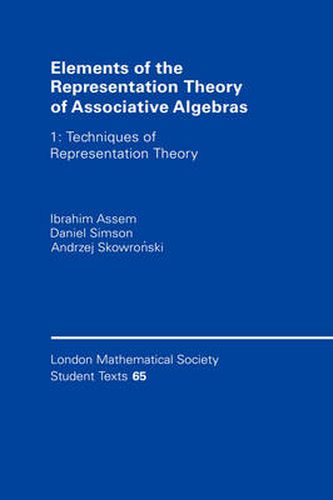Readings Newsletter
Become a Readings Member to make your shopping experience even easier.
Sign in or sign up for free!
You’re not far away from qualifying for FREE standard shipping within Australia
You’ve qualified for FREE standard shipping within Australia
The cart is loading…






This first part of a two-volume set offers a modern account of the representation theory of finite dimensional associative algebras over an algebraically closed field. The authors present this topic from the perspective of linear representations of finite-oriented graphs (quivers) and homological algebra. The self-contained treatment constitutes an elementary, up-to-date introduction to the subject using, on the one hand, quiver-theoretical techniques and, on the other, tilting theory and integral quadratic forms. Key features include many illustrative examples, plus a large number of end-of-chapter exercises. The detailed proofs make this work suitable both for courses and seminars, and for self-study. The volume will be of great interest to graduate students beginning research in the representation theory of algebras and to mathematicians from other fields.
$9.00 standard shipping within Australia
FREE standard shipping within Australia for orders over $100.00
Express & International shipping calculated at checkout
This first part of a two-volume set offers a modern account of the representation theory of finite dimensional associative algebras over an algebraically closed field. The authors present this topic from the perspective of linear representations of finite-oriented graphs (quivers) and homological algebra. The self-contained treatment constitutes an elementary, up-to-date introduction to the subject using, on the one hand, quiver-theoretical techniques and, on the other, tilting theory and integral quadratic forms. Key features include many illustrative examples, plus a large number of end-of-chapter exercises. The detailed proofs make this work suitable both for courses and seminars, and for self-study. The volume will be of great interest to graduate students beginning research in the representation theory of algebras and to mathematicians from other fields.